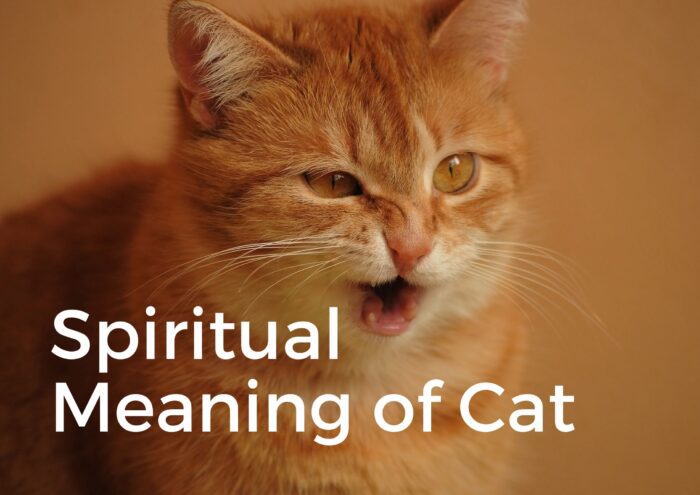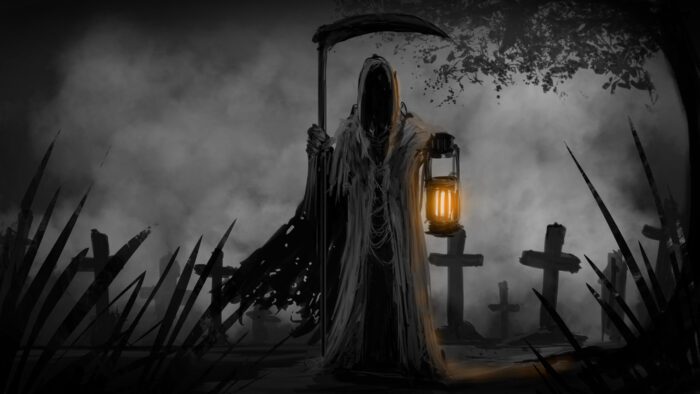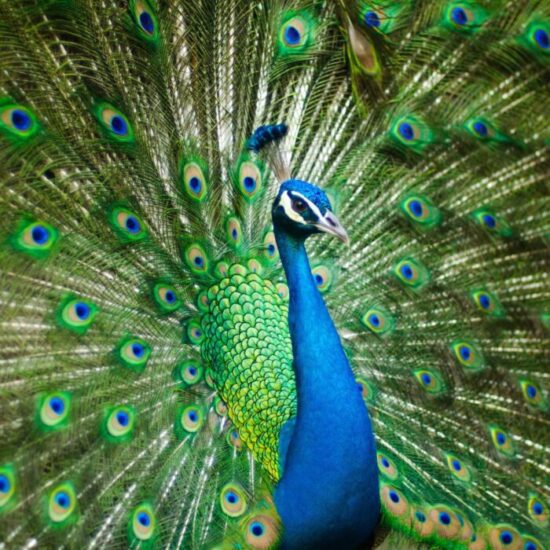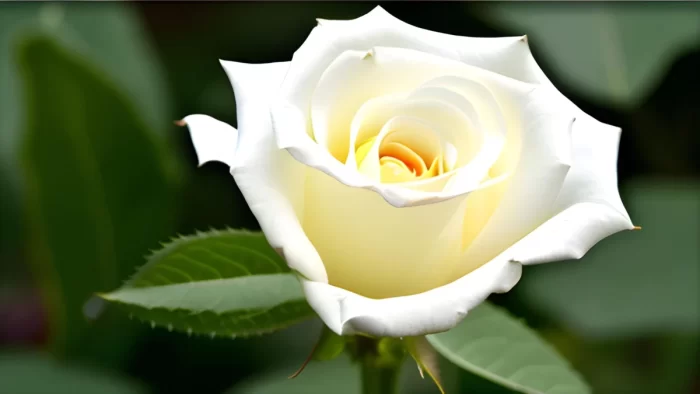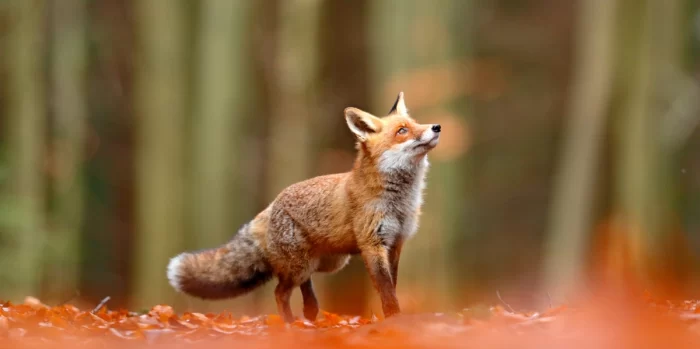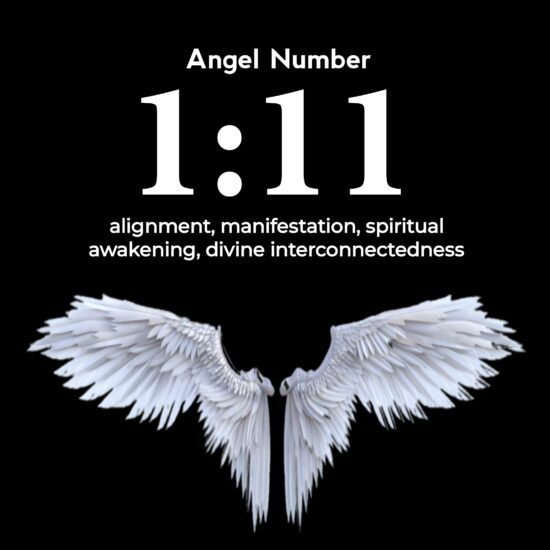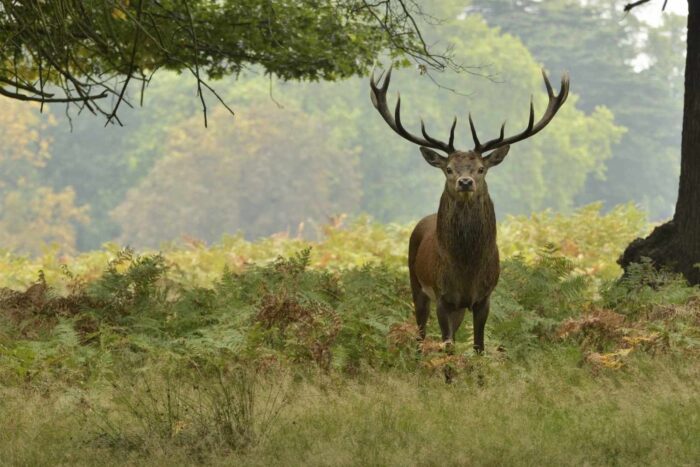Across all nations and religions, cats have been associated with symbolic meaning since ancient times. Felines, with their mysterious gaze, sleek yet erratic bodies, and air of secrecy, have come to symbolise a wide spectrum of human characteristics and experiences. Cats have established a significant position for themselves in our myths, tales, and symbolic consciousness, representing anything from independence and femininity to luck and the paranormal. In this article we talk about symbolism of the cat. Autonomy and Self-Sufficiency The cat is a widely recognised emblem of independence, self-governance, and a readiness to forge one’s own route. Cats still have more of their wild nature than dogs, who have been tamed over millennia to cooperate with humans. They therefore navigate the environment according to their own terms, perfectly capturing the human need for autonomy and self-determination. Cats also represent independence, or the capacity to take care of one’s bodily, emotional, and spiritual needs without unduly relying on outside factors. Those who witness cats hunting, marking territory, jumping off buildings, and other activities with ease may be motivated to develop their own independence and confidence in their gut feelings. Secrets and Enigma Cats are the epitome of mystery and intrigue with their slit-eyed stare, cunning gait, and frequently distant demeanour. Their propensity for staying up late, their all-terrain mobility, and their sporadic disappearing behaviours have made cats synonymous with mystery, magic, and everything unexplainable. Cats are said to direct people between the visible and invisible worlds, bridging the gap between the supernatural and everyday worlds. As a result, they are frequently portrayed as friends of shamans, wizards, witches, and other mystical beings that impart occult knowledge. Some cultures consider cats to be enigmatic when it comes to death; they are thought to protect and carry souls to the afterlife. Sensuality and Energy of the Feminine Ever since they were domesticated almost 4,000 years ago in ancient Egypt, cats have been strongly associated with feminine energy. The cat goddess Bastet, who ruled over sexuality, childbirth, motherhood, fertility, and illness prevention, embodied feminine might. Even now, Bastet’s influence links cats to women’s mystical intuition, magic, and moon cycles. Cats continue to represent feminine attributes such as warmth, sensitivity, sensuality, receptiveness, and emotional intelligence due to their silky fur, loving pats, flowing motions, and maternal behaviour with kittens. Cats are the divine feminine, in contrast to dogs, which display more stereotypically’masculine’ characteristics like aggression and group dominance. Flexibility and Sturdiness Adaptability, or the capacity to modify oneself to flourish in a variety of circumstances, is another characteristic of cats. Cats are able to easily examine their environment, locate supplies, create nesting places, and so on, whether they are in a luxury flat or the wilds. They are adept at traversing new areas and may thrive in both gregarious and lonely environments. Because of their versatility, cats have come to represent resiliency, persistence, and ingenuity. Their adaptability serves as a reminder to evaluate shifting circumstances, exercise creativity, trust their gut feelings, and deftly use their advantages to overcome obstacles. Symbolising numerous mini-deaths and rebirths in order to progress spiritually, cats also represent the idea of ‘nine lives’ in terms of rejuvenation. Fortune and Plenty Specifically, black cats have come to represent wealth and good fortune. This concept dates back to the English Middle Ages, when widows anticipated to receive numerous marriage proposals should a black cat happen to cross their way! Immigrants from Scotland and Ireland later disseminated stories about black cats as lucky charms. The maneki-neko, or Japanese beckoning cat, is the quintessential symbol. It extends a kind paw in greeting, promising wealth and good fortune to its owners. Maneki-nekos, who call forth prosperity and success, protect the doors to residences, places of commerce, restaurants, etc. Cats therefore use enigmatic, even supernatural methods to call forth blessings. Defenders of the Spirit Realm As previously said, cats’ eyes appear to stare across veils into other realities that are hidden from human view. Due to their elusive nature, nocturnal vision, and intuitive understanding of spiritual activity, cats have long been venerated as protector spirits in many cultures. Cats are protective against evil forces and can be psychic pets, spirit associates for shamans, or companions for witches. With their highly developed sensory perception, they are able to identify ghosts, devils, bad vibrations, astral disturbances, and similar entities. Additionally, cats lead deceased spirits to more secure domains so that spiritual energies do not overpower humanity. People love the energy-cleansing and blessings of cats at home. Encouraging cats to sleep close to you or to roam freely on your property helps maintain psychological equilibrium in the surroundings. This occult connection of cats is harnessed through spiritual guardianship. Independence. Unknown. Good fortune. supervision. Feelings: Flexibility. The rich symbolic history of cats has undoubtedly persisted over time! People are constantly discovering the mystic lessons of the majestic cat by observing its symbolism in mythology, art, advertising, movies, and other media. When we can decipher the message, what we see in the agile cat is frequently a reflection of our own soul. I sincerely hope you find this “symbolism of the cat” article helpful.
Dreams About Death
Dreams about death are some of the most vivid and emotionally charged dreams. They often leave us waking up in fear, confusion or contemplation about the meaning behind these subconscious imaginings. Dreams feature symbols that can represent a variety of concepts, emotions and ideas. By analyzing the context and content of death dreams, we can uncover poignant insights about our innermost thoughts and feelings. In this article we talk about the meaning of dreams about death. Confronting Mortality Dreams about death invariably touch upon themes of human mortality. The finality of physical death contrasts with the continuity of consciousness and soul that many religions and spiritual traditions describe. Dreams force us to confront the reality that our time here is limited. This can prompt urgent questions about how we are spending our allotted days and years. Death dreams may challenge people to consider their legacy and the values by which they are living. When we stare down the barrel of mortality in our dreams, it can inspire contemplation about what really matters most in this finite human lifespan. Am I investing my time in that which offers meaning and fulfillment? Or am I caught in the trappings of materialism, ego and superficial success? The impermanence of life highlighted by death dreams can motivate people to cease putting off dreams and goals until some distant tomorrow. Today becomes precious when we recognize that the sands of the hourglass will not slow down for anyone. Transformation and Rebirth Dreams about death can also symbolize the end of one phase of life and the beginning of another. Human existence is characterized by cycles of change – the changing of the seasons, the stages of life, cycles of renewal and growth found throughout nature. In many cultures and spiritual belief systems, death represents a transition between different states of being. The caterpillar dies to the self it once knew, only to be reborn as a butterfly. The snake sheds its former skin to make way for the new. In our dreams, death can signify our old self or old way of life dying to make way for our new, emerging selves. This sense of transformation and rebirth can be deeply renewing. It opens up new horizons of possibility where once we saw only limitation or stagnation. Past identities, relationships, careers and goals may need to ‘die’ before we can claim the fullness of life available to us in each present moment. Processing Grief and Trauma Dreams about death frequently relate to themes of grief and trauma. Many people dream of loved ones who have passed away or even relive traumatic memories surrounding death. This indicates unresolved grief and emotions that require conscious processing. The dreaming mind provides a safe place to unpack these powerful feelings. While conscious thought patterns may avoid or suppress painful memories, dreams bring suppressed content to the surface. Manifesting as nightmares, these death-related dreams reveal issues demanding attention and healing. Processing grief through dreams can provide emotional and psychological relief. It allows safe expression where waking life may not facilitate comfortable articulation of loss and trauma. Working through anger, denial, bargaining and acceptance is essential, even years after a loved one has passed. Dreams may even provide moments of visitation and connection, bringing comfort and reassurance. Religious and Cultural Meanings Attitudes, beliefs and assumptions about death also weave themselves into the fabric of dreams. People raised with certain religious teachings about death may have vivid subconscious experiences related to these beliefs. Meanwhile, cultural traditions around death rituals and customs flavor dream imagery and symbolism. For instance, some devout Christians dream of being welcomed into a beautiful and dazzling heavenly realm by loved ones or angels after dying. This correlates with Biblical descriptions of what awaits believers after death. In contrast, Hindus may see death as part of samsara or the cycle of reincarnation in which souls inhabit temporary bodies. Dreams can also reflect and integrate folklore and myths about death. Those raised with Irish traditions may dream of banshees – female spirits who herald a family member’s looming demise with high-pitched wailing. Dreaming of a deceased loved one covered in coins or asking for coins references the ancient Greek custom of burying the dead with coins to pay the ferryman Charon for safe passage across the rivers Styx and Acheron into Hades. Such dream images demonstrate how our cultural and religious upbringing shapes ideas about mortality. However, some common themes surrounding death symbolism in dreams transcend culture and faith. Transcending Fear While dreams about our impending demise can certainly accelerate the pulse and awaken us in an anxious sweat, they also provide incredible opportunities for spiritual and emotional growth. Confronting mortality – even in a dream state – can expand consciousness, shift perspective and uncover courage we never knew existed within ourselves. By facing and moving through terror, despair, denial and resistance around death, we open up new portals of possibility. Peering into the abyss of the great unknown, we counterintuitively discover peace and liberation from the petty concerns that can dominate waking life. Releasing attachments to identities, belongings and achievements, we touch the infinite where once we saw only endings. Some people even report powerful psychic dreams and spiritual experiences surrounding death. Moments spent hovering between worlds in an out of body state provide temporary glimpses of the great mystery. These brushes with cosmic consciousness can profoundly alter people’s worldviews and priorities thereafterward. Rather than waking up paralyzed by existential dread, this dance with mortality empowers people to inhabit each moment. When we no longer take life and loved ones for granted, daily existence becomes unspeakably sweet. Seeking Meaning There are a multitude of ways we can interpret dreams about death and dying. It’s important not to immediately jump to literal interpretations about impending doom or disaster. The first step upon waking is to reflect on the specific details and emotional themes of the dream. What symbols or scenarios were present? Who was there? How did dream-you feel?
The Symbolic Meaning Of The Turtle
The turtle is an ancient creature that has captivated human imagination for millennia with its unique appearance and personality. Slow and steady, peaceful and patient, the turtle symbolizes many things to many cultures. In this article we talk about what is the symbolic meaning of the turtle. Most prominently, the turtle is a global symbol of longevity, resilience, stability, and groundedness. Turtles can live up to 150 years, enduring through enormous change over their lengthy lifetimes. Their extreme longevity gives them an aura of immortality, wisdom and deep connection to cycles of life on earth. Long-Lived Ancient Creatures Turtles have existed on earth for over 220 million years. They saw the rise and fall of the dinosaurs and survived events that caused mass extinctions. To put their impressive lifespan into perspective: Sea turtles lived through the entire Jurassic Era when giant reptiles ruled the world. The Galápagos tortoise lives over 100 years, spanning the average lifetime of a human being. Many turtles outlive the people who care for them as pets, sometimes even getting passed down through generations of a family. Their ancient pedigree and extreme life span make turtles seem primordial, as if they’ve always been here and always will be. The turtle’s great age commands respect and reverence. Steadfast Symbols of Stability In addition to their longevity, turtles symbolize stability. Turtles carry their homes on their backs, representing the idea of always dwelling within one’s spiritual center. Their slow, methodical movements and gentle, quiet personalities emit an aura of stability. Turtles teach us the value of living deliberately, taking life step by step rather than rushing through it. They show us the power of moving through life grounded and centered within oneself. The turtle represents the wisdom that stability and perseverance often outweigh speed and impulsiveness. Sheltered in Their Shells A turtle’s shell provides protection and retreat from the outside world. For cultures around the globe, the turtle’s hard shell represents shelter, security, and safety. Just as a turtle can duck inside its shell to find refuge, it symbolizes how we, too, can find shelter within ourselves when life becomes difficult. Turtle shells also represent the earth itself as a sheltering space. Turtle symbolism suggests we, too, can find stability by grounding ourselves firmly on the earth. By literally and metaphorically rooting into the earth, connecting with nature, we establish foundations from which to safely experience life’s storms. Adaptability and Connection to Nature Amazingly adaptive creatures, turtles have developed ways to survive just about anywhere on land and sea, from scorching deserts to frigid waters. They adapt their environments to meet their needs, taking their shelter with them wherever they go. Turtles teach us that we too can maintain inner stability amid outer change. With proper foundations and connection to the earth, we can gather strength from nature, allowing us to thrive in even the most challenging external circumstances. Symbols of Fertility and Creation Many cultures link turtles to fertility, femininity and the life-giving abundance of Mother Earth. Their eggs represent birth and new beginnings, while their aquatic environment symbolizes amniotic fluid and the womb. Sea turtles are seen as guardians of oceans that literally give birth to new life. Some myths credit the sea-dwelling world turtle with supporting the weight of the entire planet on its back. Sculptures and paintings throughout history depict the world balanced upon a turtle’s shell. These myths draw from observations of mother sea turtles returning to shore to lay dozens of perfectly rounded eggs in sandy nests. The eggs hatch into tiny turtles who emerge from the sand, then rely on their mother’s guidance to scramble safely into the sea. Symbols of Patience and Serenity Watching a turtle slowly plod along, taking its time getting from here to there, reminds us to slow down and appreciate each moment. In a fast-paced world that often demands immediate results, turtle symbolism teaches patience and tranquility. Turtles demonstrate the wisdom of proceeding at your own pace to reach your goals. Their calm disposition provides living proof that serenity and peace come from within. We can cultivate those same qualities by simply taking the time for deliberate breathing, movement and stillness. Spiritual Symbols For millennia all over the world, turtles have carried deep spiritual symbolism. Native American tribes consider turtles sacred creatures that represent Mother Earth. Because they dwell both on land and sea while carrying their homes on their backs, they embody a connection between the earth’s realms. In ancient mythologies from numerous cultures including Chinese, Indian, Japanese and Greek, the World Turtle carries the world upon its back. In these spiritual traditions, the turtle anchors and supports all life on Earth. In Hinduism, Vishnu, the preserver of the universe, takes his second avatar as Kurma the Tortoise. Ancient scriptures detail the sacred story of how Kurma the Turtle offered his back as the base that supported the churning stick used to stir the primordial ocean of milk, creating the nectar of immortality. In some African creation stories, the world emerged from the infinite waters onto the sturdy back of a sea turtle. Some Native American tribes believe that turtles created the earth, while others see turtles as holders of ancient wisdom who witnessed creation unfolding. The turtle’s association with primordial waters and the origins of life symbolize their spiritual connection to birth, renewal and transformation. Their presence at the dawn of creation in mythology gives turtles the aura of ancient, otherworldly knowledge passed down through the ages. A Lasting, Ancient Symbol Turtles date back to the age of the dinosaurs, carrying wisdom gathered over 200 million years of observing Mother Earth’s many changes. These tranquil creatures display remarkable tenacity, stability, and steadiness along their long lifespans. Across cultures and centuries, the turtle remains an enduring symbol of patience, resilience, connection to the earth’s rhythms and devotion to the slow, steady path that wins the race. Their longevity imparts sacred wisdom — assurances that over time, persistence and faith inevitably overcome life’s hurdles. The
Symbolic Meaning Of The Peacock
Known for its radiant plumage and graceful movements, the peacock has captivated humanity’s imagination for millennia as a symbol of splendor and nobility. With tail feathers that can span over six feet in length and exhibit a stunning range of iridescent colors, the peacock projects an aura of confidence and pride as it fans its feathers in a dramatic display. Beyond its visual brilliance, the peacock’s symbolism conveys deeper meanings about inner divinity, transformation, and the renewal of life. In this article we talk about what is the symbolic meaning of the peacock. Alluring Displays of Feathered Finery The most recognizable feature of the peacock is its extravagant tail plumage, consisting of elongated feathers marked with elaborate “eyes” in hues of blue, gold, red, and other colors that shift and change under light. This train of feathers, capable of being erected into a spectacular fan, makes the peacock one of the most visually captivating creatures on earth. The striking beauty of the peacock has made it a symbol of grace, royalty, and refinement throughout history. In India, the birthplace of peafowl, the bird’s radiant tail feathers and colors are thought to resemble the vibrancy and detail of the night sky. This connection to the cosmos has made the peacock a revered symbol in Hinduism and ancient myth, representing the union between heaven and earth. The eye-like patterns are also considered protective amulets against evil in some cultures. Confidence and Allure The peacock displays its feathers in a gesture that conveys confidence, pride, and a flair for the dramatic. The male peacock, in particular, has a courting display called train-rattling, in which it fans and shakes its feathers to catch the female’s attention. This strutting behavior and the head-up posture of an unfurled peacock reflect dignity, self-assurance, and a bold declaration of its vibrant essence. This captivating courtship ritual has made the peacock an emblem of charm and attraction throughout folklore and iconography. In ancient Greece, the peacock was considered a sacred bird of Hera, goddess of beauty and consort of Zeus. Due to this divine association, peacock imagery was later adopted into religious symbolism for renewal and resurrection. Over the ages, the allure of the peacock has cemented its status as one of humanity’s most beloved avian species. Cycles of Death and Renewal An integral aspect of the peacock’s symbolism is its ability to lose and regrow its feathers. Unlike most birds which molt gradually, peacocks shed their train feathers all at once before growing a whole new set. In many cultures, this cycle of feathers has become a metaphor for renewal after death or loss. Ancient Greeks believed the peacock’s feathers carried the heavens’ patterns, dying every winter before their eyes would “resurrect” with even more beautiful plumage each spring. In the East, the peacock was associated with immortality because of this death and rebirth symbolism. The motif of the peacock and its feathers continues to be a popular emblem on tombs and memorials to represent the soul’s journey after death. The peacock’s seasonal cycle also heralds the arrival of spring and rebirth. Due to this association, peacock feathers decorate the iconography of Estsanatlehi, a Navajo goddess who represents fertility and renewal. The annual loss and regrowth mean the peacock represents continuity even in the face of impermanence. The Divine Guardian of Royalty In India and throughout history, the peacock has been intertwined with royalty, nobility, and divine authority. Ancient kings and emperors used the peacock as their emblem, adorning thrones, coins, and royal seals with its likeness. The bird’s association with Lakshmi, the goddess of fortune, brought prosperity to those who displayed its symbols. The most common form of the peacock in Eastern iconography is as the mount of Kartikeya, the Hindu god of war and bestower of sovereignty. Hindu temples and palace gardens across India harbor flocks of peafowl as honorary guardians. The peacock’s omnipresence in regal insignia firmly established its reputation as the guardian of authority, wealth, and privilege. Balance and Interconnection in Nature A less obvious component of the peacock’s symbolism is the balance and harmony represented by its resplendent tail feathers and graceful carriage. Although the feathers appear too large and vibrant for the peacock’s body, it steps with innate poise and adapts to the additional weight. The peacock effortlessly balances the elaborate plumage as it fans into a wheel-like shape, representing the symmetry and interconnectedness underlying nature’s diversity. The patterns of the peacock’s feathers bear a strong resemblance to the patterns on leaves, butterfly wings, and other natural structures and organisms. These parallels evoke meanings of unity, equilibrium, and congruity within the complexity of the living world. The peacock’s beauty therefore signifies the harmony between all living things and the order underlying creation. The Peacock Within: Inner Radiance and Actualization The graceful peacock, adorned with shimmering feathers, has become a popular symbol for people seeking to embrace their inner vibrancy, creativity, and authentic selves. The metamorphosis of the peacock, from a drab chick to an exquisite display of colors, reminds us of the transformation that occurs when we honor our intrinsic worth and allow our “true colors” to shine through. Just as the peacock fans its feathers without self-consciousness, the peacock metaphor teaches people to take pride in their gifts, move through the world with confidence, and greet themselves and others from a place of dignity. The radiant explosion of color represents the inner joy, beauty, and divine essence accessible to all living beings when we boldly inhabit ourselves. Conclusion: Vision of Brilliance, Rebirth, and Balance With its unparalleled rainbow plumage, noble gait, and captivating displays, the peacock has rightfully earned acclaim across cultures as one of the most visually arresting species on the planet. While its physical beauty accounts for much fascination, the peacock’s rich symbolism conveys further meaning related to spiritual rebirth, inner radiance, nobility, equilibrium, and our interconnection to all living things. The peacock’s ability to die and renew itself annually has made it a cherished emblem of continuity
Dream About Falling
One of the most prevalent dream experiences is that of falling. Indeed, between 60 and 70 percent of people are said to have had falling dreams at some point in their life. This illustrates a key truth about the human experience: dreaming is universal and unaffected by cultural background or personal characteristics. But why do falling dream happen so often, and what might they possibly mean? Feelings Unchained Falling dreams, according to many psychologists, are indicative of repressed emotions that have surfaced in the subconscious. The emotions we may be feeling in our waking lives—such as worry, vulnerability, lack of control, or insecurity—are reflected in our dreams. Falling dreams enable us to recognise, examine, and deal with these deepest concerns, anxieties, and apprehensions by bringing these feelings to the surface. Helplessness and Giving Up Dream analysts frequently link the symbolism of falling to feelings of helplessness or dread of failing in life. It may also represent the necessity of giving up and letting go of things that aren’t in line with our best interests. To land safely again, we have to let go of what we have been holding on to firmly, much as we do when we free-fall in a dream. Sensations in the Body The visceral physical sensations associated with falling dreams are well-known, including the sharp dip in the stomach, the sensation of floating, and the rush of adrenaline upon impact. These physical experiences play a part in falling dreams, which frequently startle the dreamer awake. The experience’s materiality highlights the close relationship between the mind and body and the powerful influence that thoughts and emotions have on our bodily conditions. Cultural Explanations It’s interesting to note that falling dreams have different cultural connotations. Dreams of falling were considered unlucky in ancient China. The Iroquois tribe, on the other hand, believed that falling dreams were a portent of imminent illness that needed to be healed. Even now, some people interpret falling as a subconscious warning of approaching peril, while others regard it as a chance for introspection. Lucid Dreaming’s entry point Lucid dreaming, in which the dreamer becomes aware that they are dreaming, can occasionally be brought on by falling dreams. Some even acquire power over their dreams with this knowledge. Thus, lucid falling dreams offer a technique to access the subconscious. Through deliberate autumn navigation, we can reveal previously undiscovered aspects of our waking selves. Falls That Keep Coming The phenomena of recurrent falling dreams can be confusing and disconcerting for individuals who encounter it. On the other hand, recurrent dreams force us to focus and dig farther into unresolved emotional issues. Maintaining a dream diary may assist in identifying links between events in real life and recurring falling dream themes. Self-Revelation via Analyses By investigating the particular images, related feelings, and underlying themes in dreams about falling, self-discovery can be achieved through recording and analysing these dreams. Analysing falling dreams allows for a deeper dive into the psyche to extract insightful information, just like the dreamer does during the fall when they descend into the depths of their subconscious mind. Handling Uncertainty Some people have severe distress when they have falling nightmares. Anxiety associated with these nightmares can be reduced with a range of coping mechanisms. Recurrences of unpleasant falling dreams can be productively addressed by keeping a dream journal, practicing relaxation techniques prior to bed, or seeking professional counselling. Body Informs Mind Dreams that come down physically demonstrate the close relationship between the mind and body. The body responds to the mind’s perception of falling by releasing adrenaline, speeding the heart rate, and producing a weightless sensation. This demonstrates how our feelings and ideas cause actual physiological reactions. Ideas for Creative Expression From Salvador Dali’s artwork Dream Caused by the Flight of a Bee Around a Pomegranate to the iconic image of Ariadne’s infinite falling dream in the movie Inception, the surreal character of falling dreams has inspired many artistic works. Falling dreams serve as evidence that the subconscious is capable of inspiring amazing artistic creations. Above and Beyond Literal Interpretation Even though they can be unpleasant, falling dreams have far deeper meanings than just literally falling. Through an examination of their symbolic meaning and emotional resonance, these dreams offer a way to become more self-aware, reveal hidden anxieties, break through emotional barriers, and find creative inspiration. The next time you experience a falling dream, see it as a call to introspection.
The Symbolism Of White Roses
White roses have held symbolic meaning since ancient times. Often associated with purity, innocence, spirituality, and new beginnings, white roses have a rich history intertwined with culture, literature, religion, and mythology across the world. Their pristine color evokes images of angels, weddings, peace, sunlight, and clarity of thought. In this article we talk about what is the symbolism of white roses. Purity and Innocence Across many cultures, white roses symbolize purity and innocence, likely due to their immaculate color. In ancient Greece and Rome, white roses were associated with true love, while in Eastern cultures they represented sacred femininity. Today, we often see white roses at christenings and first communions, symbolizing the innocence associated with childhood. Their association with purity also lends itself to white roses representing cleansing and freeing oneself from impurities. Weddings and Celebrations As symbols of new beginnings and everlasting love, it comes as no surprise that white roses frequently accent weddings and other celebrations of life and love. Their bright white petals and heady fragrance evoke joy and hope for the future. Not only do white roses make beautiful floral arrangements, but they also hold deep meaning – they represent unity, virtue, honor and the sacredness of marriage. White roses are also incorporated into celebrations of enduring relationships, such as 25th and 50th wedding anniversaries. Remembrance and Sympathy White roses stand out beautifully against darker surroundings, which draws symbolism of light against darkness. As such, white roses are often used for solemn occasions, such as funerals and memorials, to symbolize remembrance. White roses comfort the grieving, as they represent the sweet memories and pure spirit of those we have lost. Sending white roses is a thoughtful way to impart your sympathy and demonstrate that the deceased will hold a special place in your memories. Spiritual and Religious Significance In Christianity, white roses represent spiritual purity, innocence and holiness. They featured in legends about the Virgin Mary and Saint Elizabeth. In paganism, white roses were connected to the White Goddess who stood for lunar energy. In Wicca, they represent the Triple Goddess, while in astrology, white roses are associated with the moon. Eastern cultures also draw spiritual meaning from white roses, including enlightenment and tranquility of the soul. Various world religions use white roses to decorate places of worship, religious ceremonies and festivals to mark special or sacred occasions. Love and Romance Red roses most frequently come to mind when it comes to romance, but white roses also hold symbolic meaning in relationships. While a red rose conveys passionate romantic love, white roses represent pureness of feelings and reverence. Gifting white roses demonstrates loyalty and everlasting love – an eternal bond. They also express charm and humility, as well as new beginnings in relationships and marriage. Additionally, white roses can signify the devotion of partners in long-term relationships, which is why they are incorporated into anniversary celebrations. Healing and Hope The soothing white petals of roses seem to radiate serenity and light. White roses can impart a sense of comfort, hope and tranquility in difficult times. Their pristine purity inspires clarity of mind and offers encouragement. When someone is gravely ill or recovering from illness or trauma, white roses can lift the spirit with their symbolism of spiritual healing. They also represent emotional healing from grief or romantic hardships. White roses remind us to have faith during challenging times and reassure us that brighter days lie ahead. Literary and Artistic References White roses have been the subject of literary symbolism for centuries. Poets use them to reflect the transience of youth and life, while also representing everlasting love. For example, Shakespeare featured white roses in his play Romeo and Juliet. White roses also found their way into paintings depicting the Virgin Mary. Today, white roses continue to inspire poets and appear frequently in modern artwork, photography, and design. Cultural Variations As with most symbols, the white rose takes on slightly different meanings across cultures. In Europe, it largely symbolizes innocence and purity. In the United States, white roses have traditions rooted in weddings and new beginnings. In Asian cultures, the white rose can signify loss and commemoration of the deceased. In Middle Eastern cultures, white roses represent new life, as well as cleansing and clearing in symbolic cultural practices. In general, however, the white rose maintains its connotations of reverence and respect across cultural boundaries. Modern Interpretations While historical associations with white roses still resonate today, some new interpretations have emerged in recent decades. For example, white roses are sometimes used in contemporary ceremonies to symbolize peace and remembrance of those killed violently. They have also come to represent women’s rights in some contexts, with white roses used as symbols for the suffragette movement as well in modern political activism. Whatever the use, white roses still maintain their association with honor and hope. Tips for Using White Roses Add white roses to home decor to impart feelings of peace. Display them in entryways to symbolize welcoming guests with an open heart. Send or gift white roses to new mothers, or for christenings and first communions. Incorporate white roses into wedding ceremonies and displays to represent unity, hope and new beginnings. Send white roses in times of grief or offer them at memorial services to symbolize cherished memories of those we have lost. Give white roses to someone recovering from trauma or illness to lift their spirit and symbolize encouragement. Plant white roses in your garden to add a classic floral element that represents peace, tranquility and love. Conclusion Throughout history, the white rose has maintained its associations with reverence and honor. This graceful flower blooms with symbols of purity, sanctity, new beginnings, everlasting love, remembrance, spirituality, and healing. White roses remind us to celebrate the innocence of childhood, the joy of new life, and the serenity of cherishing precious memories. Their bright blossoms lift our spirits with encouragement, hope and clarity of mind. With its rich and nuanced symbolic legacy, the white rose continues to have
The Symbolic Meaning Of The Fox
Foxes have captivated the human imagination for millennia. With their bushy tails, pointed muzzles, and sly personalities, these remarkable creatures have come to signify many things to many cultures. From tricksters to teachers, fox symbolism is complex, multifaceted and reveals much about humanity’s relationship with nature. In this article we talk about what is The Symbolic Meaning Of The Fox. Across language, geography and time, the fox appears in origin stories, creation myths, fables and folklore. Fox meanings vary – sometimes from one village to the next – but there are common symbolic threads that reveal universal truths about these fascinating beasts. By exploring fox symbolism, we gain insight into how animals influence culture while learning more about these adaptable, intelligent creatures. Clever as a Fox: Foxes as Symbols of Cunning and Wit One of the most ubiquitous symbolic meaning of the fox is that of cunning trickster. In many Western traditions, the fox is synonymous with slyness and wit. Aesop’s fables famously use the fox as a symbol of wisdom and smarts. Tales like “The Fox and the Grapes” teach readers the perils of irrational decision-making through the fox protagonist. Similarly, the phrase “clever as a fox” permeates multiple languages and cultures. In French, for example, the idiom “rusé comme un renard” implies the fox is crafty and street smart. From children’s stories to idiomatic expressions, it’s clear foxes are globally recognized as intelligent, quick-thinking creatures. Shapeshifters and Mystics: Foxes in Shamanic Traditions Foxes play an important spiritual role for many indigenous cultures across the globe. Shamanic traditions from North America to the Arctic revere foxes as powerful guides or messengers between cosmic and earthly realms. Some Sioux tribes consider foxes to be protective spirits with otherworldly wisdom. Other groups, like the Kashaya Pomo people, see the fox as a creator god who brought fire, language and culture to humanity. Arctic foxes also tend to be culture heroes who transform the world in Inuit mythology. Furthermore, fox spirits like the Japanese kitsune, Korean kumiho, or Chinese huli jing are thought to be immortal – able to shift between worlds and assume human-like forms. Many East Asian fox myths warn against the dangers of fox spirits who wield magic that can be either benevolent or malicious. Ultimately, cross-cultural fox symbols reveal an animal believed to traverse cosmic and earthly planes. Foxes emerge as mesmerizing mystics in folklore, myth and spirituality globally. Adaptability and Resilience: The Fox as Survivor Another key symbolic trait of foxes is their adaptability. Foxes are remarkably versatile creatures who thrive across diverse habitats – from the Arctic tundra to desert scrublands. Foxes even colonize urban spaces, denning beneath buildings, bridges and businesses. This ability to adjust to extremes helps foxes represent resilience and fortitude. A fox’s resourcefulness allows it to find shelter, raise young and evade threats amid challenging conditions. Culturally, the fox mirrors human struggles and the will to survive when odds seem insurmountable. Just as foxes change fur color to blend into snowy winter environments, so too can humans adapt habits, lifestyles or mindsets to persevere. The fox’s flexibility continues to inspire human societies across continents. Gender Symbolism: Femininity, Fertility and Foxes Interestingly, fox symbolism also differs across gender lines. In many cultures, foxes are powerfully linked to femininity, feminine deities and female leaders. In Ancient Egypt, the fox served Bastet, feline goddess of fertility, motherhood and protection. Arctic fox furs and tails adorn shamanic garments worn by holy women to invoke the goddess’s blessing. Fox imagery similarly bolsters female authority figures like the Korean kumiho, who often appear as seductive, magical women in literature. The association between foxes and womanhood also stems from vixens’ protective maternal instincts. Female foxes are devoted mothers who nurture their young through harsh seasons. By safeguarding future generations, fox mothers thus symbolize the sacred feminine power to create community and impart wisdom. Pop Culture: Foxes in Contemporary Media While fox symbolism boasts ancient origins, modern pop culture continues to keep the fox in the public eye. One need only think of fantastical fox characters from children’s media like Disney’s Robin Hood, Ylvis’ “The Fox”, or even Fox Mulder from “The X Files” to see how fox imagery persists today. These contemporary fox depictions inherit symbolic meanings from historical folklore. The titular hero of Robin Hood encapsulates the fox’s legendary cunning, stealing from the rich to give to the poor. The goofy anthropomorphic fox Ylvis introduced in 2013 highlights the animal’s playfulness. Even the cool skepticism of paranormal investigator Fox Mulder subtly hints at fox spirits with otherworldly knowledge. Through books, video games, movies and more, fox symbolism continues to captivate worldwide audiences. Whether depicted as cute cartoon companions or paranormal detectives, fictional foxes allow this remarkable creature’s mythos to evolve. The Enduring Enigma of Fox Symbolism Few other animal symbols capture humanity’s imagination as thoroughly as the fox. For countless generations, human cultures interpreted the fox’s curious behaviors as mystical, mischievous or maternal. Fox mythology reveals as much about human values and dreams as it does vulpine nature. But at the core, fox symbolic meanings illuminate the unique spirit of these delightful creatures. Like all animals, foxes have inherent worth and their own secrets to share. If we listen closely to indigenous stories, or even observe foxes adaptively denning in our own backyards, perhaps we can better understand fox mysteries through peaceful coexistence. Ultimately, the fox’s symbolic wisdom persists by keeping cultures a bit curious, creative and kind. By respecting foxes for the autonomous, invigorating individuals they are, humanity gains far more than we realize. I sincerely hope you find this “The Symbolic Meaning Of The Fox” article helpful.
The Meaning Of Angel Number 111
Angel numbers are recurring numerical sequences that are thought to include messages from the universe and celestial guardians, as well as divine advice and insight. The same digits are included in these numbers, which include111, 222, 333, and so forth. In this article we talk about the meaning of angel number 111. Angel numbers are believed to represent outward manifestations of angelic omens and signs. Believers say that seeing angel numbers indicates that the angels are attempting to communicate with you and grab your attention. Among all the angel numbers, 111 is regarded as being among the most important. Unlike other angelic numbers, the number 111 has unique connotations and significance. We’ll talk about the significance and meaning of seeing the angel number 111 in your life in this blog post. The Numerology Power of One Numerology is the basis for comprehending the significance of 111. Numerology is an old system that gives numbers qualities and symbolic meanings. In numerology, the first and most fundamental number is 1. It speaks to qualities like ambition, self-reliance, leadership, fresh starts, and new beginnings. Since one is the source of all other numbers, it also stands for the idea of manifestation. The basic connotations of the number 1 are emphasised and enhanced when it appears frequently, as it does in the sequence 111. Since 111 is said to be three times more strong than 1, it is a very fortunate and potent sign with lots of potential. What Angel Number 111 Means Angel number 111 has a message that is really clear. It means that your inner wisdom and desires are in harmony with each other. Opportunities have materialised as a result of your ideas, convictions, and deeds. The angels are telling you to stay on your current course in order to accomplish your objectives if you see the number 111. Put your faith in your intuition and gut feelings to guide you forward. Trust that the universe is helping you fulfil your soul’s destiny. 111 Signals Alignment and Manifestation One of the core meanings behind angel number 111 is alignment. When you catch sight of this number sequence repeatedly, pay attention—the angels are telling you that you are in perfect alignment with your desires and energetic state. You are tuned in to the right vibrational frequency to manifest wonderful things in your life. The second core meaning behind angel number 111 is manifestation. Seeing this sequence over and over means that the seeds you have planted in life are beginning to sprout and grow. The angels encourage you to keep watering those seeds with your thoughts, energy, and actions. Maintain your belief and focus, and soon your desires will bear fruit. Seeing 111 is the angels confirming that you have successfully used the Law of Attraction to magnetize what you want into your life, whether those are financial gains, love, happiness, or abundance of any kind. It is a sign from the Divine that you are on the right path. 111 Signals Support and Encouragement In addition to alignment and manifestation, angel number 111 signals that you have robust spiritual support behind you. Seeing 111 over and over is your guardian angels sending you encouragement to let you know that they are with you every step of the way. You have powerful forces in the Universe that are holding space for your dreams to blossom. The angels want you to know that you are not alone on your soul journey—there is a whole realm of Divine beings who are cheering you on! When you see 111 repeatedly, recognize it is as a pat on the back from the angelic realm. They are letting you know that your desires, intentions, and wishes have been heard and registered by the forces of the Universe. Help, guidance, and support are all around you. You have all you need within you and around you to succeed. 111 Reminds You to Focus Positive Energy Angel number 111 also carries the message that it’s important you maintain positive energy and beliefs. Seeing 111 over and over reminds you to shed any fears, doubts or negative thought patterns that could be polluting your energy field. Your thoughts influence and shape your reality, so it’s vital to stay in a positive mindset. Trust that the doors of opportunity are standing wide open for you, while releasing attachment to exactly how your desires will manifest. The angels know better than we do how blessings should unfold. When you catch sight of 111, take it as a sign to raise your vibration. Focus on gratitude, optimism and joy. Celebrate the wonders of life large and small. Keep your convictions strong and steady in the face of challenges. This positive energy and attitude will usher even greater abundance into your world. 111 Signals a Time of Growth and Expansion The number 1 represents fresh starts and new journeys. When this energy repeats in the sequence 111, it signals a time of massive growth, progress and opportunity. Your angels want you to know that you are entering or are already in a fertile period filled with potential. Seeing 111 over and over means you have stepped through a portal into a new realm of possibilities. What wonderful seeds will you sow? This is the perfect time to courageously go after your dreams and heart-felt goals without hesitation or fear. Know that the winds of change are at your back, propelling you ever closer to your desires. Growth, expansion and good fortune awaits you in this new cycle of creation and becoming. 111 and Love In the area of romantic relationships, seeing 111 frequently is a sign to keep the faith. Trust that your perfect soulmate is out there searching for you just as you are searching for them. Or, if you are already in a relationship, angel number 111 is a reminder to nurture your partnership by focusing on the positive. See problems as opportunities for growth. Express gratitude for your loved one
The Symbolic Meaning Of The Ichthys
The ichthys, or ichthus, is one of the most enduring symbols of the Christian faith. This simple image of a fish has complex origins and a rich history of meaning. In this article we talk about what is the symbolic meaning of the Ichthys. The Origins and Early History of the Ichthys Symbol The ichthys symbol has its roots in the first century AD when Christianity was still an obscure offshoot of Judaism. In the Greek language, the word ichthys means “fish.” Early Christians used the fish symbol to secretly identify each other when Christianity was still an underground movement and followers risked persecution. The Greek word ichthys is also an acrostic which contains the first letters of the Greek phrase “Ίησοῦς Χριστός, Θεοῦ Υἱός, Σωτήρ”, meaning “Jesus Christ, Son of God, Savior.” This allowed early Christians to covertly communicate their faith. If a stranger drew an arc in the sand like the shape of a fish, a Christian could confirm their shared faith by drawing the second arc to complete the symbolic fish. The Ichthys as an Enduring Christian Symbol Although the origins of the ichthys symbol are rooted in covert identification, over time it became an open symbol of faith with a deeper symbolic meaning for Jesus Christ. The fish represents Christianity’s foundations in Judaism, Jesus’s ministry as a “fisher of men,” and the expansive growth of Christianity. Its Symbolic Meaning as a Fish On a basic level, the Christian fish symbol pays homage to the historical beginnings of Christianity. Fish were an integral part of the diet in Galilee where Jesus spent most of his life and preached to his first disciples, most of whom were fishermen. The humble, streamlined ichthys encapsulates Jesus’s simple path of ministry. The fish also has an enduring connection to Judaism. The Jewish Sabbath meal typically included fish as an appetizer. The ichthys symbol essentially represents Christianity as an offshoot of Judaism with Jesus Christ at its head. Its Christological Symbolism For Christians, the ichthys also carries a specifically Christological meaning. The fish represents Jesus’s identity as the Messiah who was foretold in the writings of the Old Testament prophets. The symbol makes reference to stories in the Gospels about Jesus feeding the multitudes with fish and telling his disciples that they would become “fishers of men.” In this interpretation, the fish is a symbol of the church. Christ’s disciples helped expand Jesus’s ministry through evangelism. Just as fish are prolific creatures that travel in schools, the “fishers of men” filled their nets with new believers and rapidly expanded Christianity. A Secret Sign No More: Cultural Adaptations and Contemporary Use Although the ichthys originated as a clandestine sign for early Christian communities, today it is displayed openly as a marker of faith. From bumper stickers to business logos, the fish symbol can be spotted in all corners of contemporary Christian culture. However, its ubiquitous presence sometimes overshadows the rich history of this symbol. When asked, many Christians cannot articulate the meaning behind this enigmatic image that now graces T-shirts, key chains, and church signs. Engaging with the surprising origins and enduring interpretations of the ichthys gives new depth to this millennia-old symbol. The Enduring Message of the Ichthys At its core, this humble fish points to the revolutionary and world-altering ministry of Jesus Christ. An ordinary man from Galilee inspired ordinary fishermen and laborers with his message of compassion. His disciples, like fish, multiplied rapidly throughout the region and eventually spread the gospel across continents. With its ancient roots and enduring message of salvation, the ichthys remains a globally recognized emblem of Christian faith for the modern age. No longer a furtive sign used by fringe sects, this fish symbol bears witness to the profound, civilization-shaping impact of Christ’s brief ministry on the shores of an obscure Roman lake.
Symbolism Of The Stag
Throughout history and across cultures, the graceful stag has captivated imaginations as a symbolic figure imbued with rich layers of meaning. With its impressive antlers crowning a strong yet agile frame, the stag epitomizes masculine virtues of strength, courage and nobility. Yet it also represents feminine grace and psychic sensitivity. In this article we talk about Symbolism Of The Stag. As a wildlife inhabitant of forest and glen, the stag links us to the natural world and seasonal cycles of renewal. Its antlers, shed and regrown each year, reflect nature’s endless capacity for rebirth. Let’s explore some of the symbolic interpretations of this magnificent animal. Historical and Cultural Significance The stag appears in Paleolithic cave paintings, indicating its longstanding importance to early humankind. In Chinese tradition, the stag symbolizes longevity and wisdom for its long life span. Native American tribes viewed the stag as an emblem of abundance and fertility. Celtic mythology in particular associates the stag with regeneration and the life force. One story tells of a magical white stag that would appear when a ruler’s reign was ending. The stag’s capture signaled it was time for a transition of power. Spiritual Symbolism Of Stag Several religions incorporate the stag as a spiritual symbolism. As early Christian art depicts, Jesus would manifest to his followers as a white stag. The animal served as a Christ symbol evoking purification, light and compassion. In Hindu iconography, the god Shiva sits in meditative pose upon the back of a stag, representing the ability to master the mind. The stag exemplifies focus, stillness and contemplation amidst the swirling chaos of thoughts. The Celtic god Cernunnos wears stag antlers as he rules the forest realm. He represents the wild masculine, in harmony with nature and the freedom of the uncivilized. Strength, Virility and Nobility The stag’s antlers are its most distinctive feature – weapons used to assert dominance, fight off predators, and attract mates. No other mammal fully regenerates organs as elaborate and essential to survival as a stag’s antlers. Each year they grow bigger and more impressive. This process reflects a stag’s potency, virility, and determination. Their regal appearance further gives stags an air of nobility, confidence and wisdom. By contrast, males shed antlers in winter or rutting season – possibly signifying vulnerability, sacrifice or renewal. Shedding antlers also indicates the stag’s alignment with natural cycles and seasons. Renewal and Rebirth Indeed, the shedding of antlers represents nature’s death-rebirth cycle in its purest form. After the stag loses its antlers, new ones will regenerate as furry velvet sprouts from the bone. The new antlers serve as a visible reminder that strength and beauty can emerge transformed after a period of vulnerability. Stags also have an uncanny ability to regenerate damaged tissue and bone. Even severe injuries rarely affect the splendid regrowth of antlers. Their self-healing capacity is so powerful, it has inspired studies in human medicine. Truly the stag is a symbol of nature’s resilience. Grace and Psychic Sensibility For all its masculine attributes, the stag also demonstrates delicate grace. Stags hold their head high, with large tranquil eyes conveying sensitivity and awareness. Their movements are agile and elegant as they bound through meadows or swim across lakes. By some accounts stags are uniquely intuitive animals, sensing danger on the wind and reading omens invisible to humans. If a stag senses peril ahead, it will turn the herd to safety. This psychic edge amplifies their protective, noble bearing. Connection to Nature’s Realm As creatures of the forest, stags signify the call of the wild places – living emblems of all that is free, primal and natural. Their habitat in remote woodlands means they often remain elusive and mysterious to the human realm. Yet the stag also mediates between the civilized world and nature’s domain with its ability to navigate both. Perhaps this liminal quality is what enables it to symbolize the threshold between life and death, or lead spiritual seekers to transcendent states. In some cultures stags were considered messengers from the fae realm of magical beings and nature spirits. People believed that catching sight of a white stag brought blessings, magic and visionary inspiration. Leadership and Guidance Stags demonstrate leadership and protection by shepherding deer herds across the land, keeping watch for predators, and warning others of impending dangers. Seeing a stag offers guidance when one feels directionless. Like a beacon it can reorient wanderers to the path ahead, catalyzing clarity and renewed purpose. By some accounts a stag may also indicate the presence of a teacher – human or spirit – who can impart wisdom and illumination. If the stag senses the seeker is ready for expanded awareness, it may lead them symbolically out of darkness. The Stag in Myth and Legend Stories featuring the stag or its image carry timeless appeal. Greek legend spoke of the Ceryneian Hind, a magnificent golden doe sacred to the goddess Artemis. Warriors and hunters pursued this elusive stag to prove their skill and courage. King Arthur’s quest to capture the white stag represents the search for spiritual consciousness – a journey into the forest’s heart where inner illumination awaits. In Harry Potter books, the character Patronus that watches over the hero takes the form of a shining silver stag. This protector-guide models strength, trust in intuition, and the light that comes after adversity. What the Majestic Stag Means to You However it appears symbolically, the regal stag conveys dignity, wisdom, sensitivity and power. Like this wild sovereign of the woods, we can lead others by example while retaining humility and grace. We can live aligned with nature’s rhythms and seasons. The stag demonstrates resilience through its death-rebirth cycle, reminding us that new beginnings emerge from every ending. By observing and reflecting on this noble animal, we find meaning that translates uniquely to our own lives. I sincerely hope you find this “Symbolism Of The Stag” article helpful.


